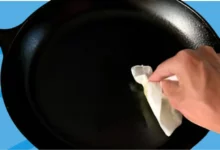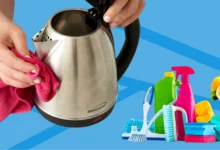How to Use Clip-On Pressure Cooker for Effortless and Flavorful Meals
In the realm of modern culinary exploration, the clip-on pressure cooker stands as a versatile marvel, streamlining the cooking process and revolutionizing the way we approach time-sensitive recipes. As we delve into the art of utilizing this innovative kitchen appliance, this guide aims to demystify the intricacies of how to use clip-on pressure cookers.
With convenience at the forefront, clip-on pressure cookers have become a staple for home chefs seeking efficiency without compromising flavor. Whether you’re a seasoned cook or a kitchen novice, mastering the art of these pressure cookers opens a gateway to a world of culinary possibilities.
In this comprehensive guide, we will navigate through the essential components, safety measures, and step-by-step instructions for harnessing the full potential of your clip-on pressure cooker. From assembling the cooker with precision to crafting delectable meals, we’ll unravel the secrets to a seamless cooking experience.
Join us on this culinary journey as we explore the ins and outs of clip-on pressure cookers, empowering you to confidently wield this culinary tool and elevate your cooking prowess. Let’s embark on a flavorful adventure that combines the precision of technology with the warmth of homemade meals.
Overview of Clip-On Pressure Cookers
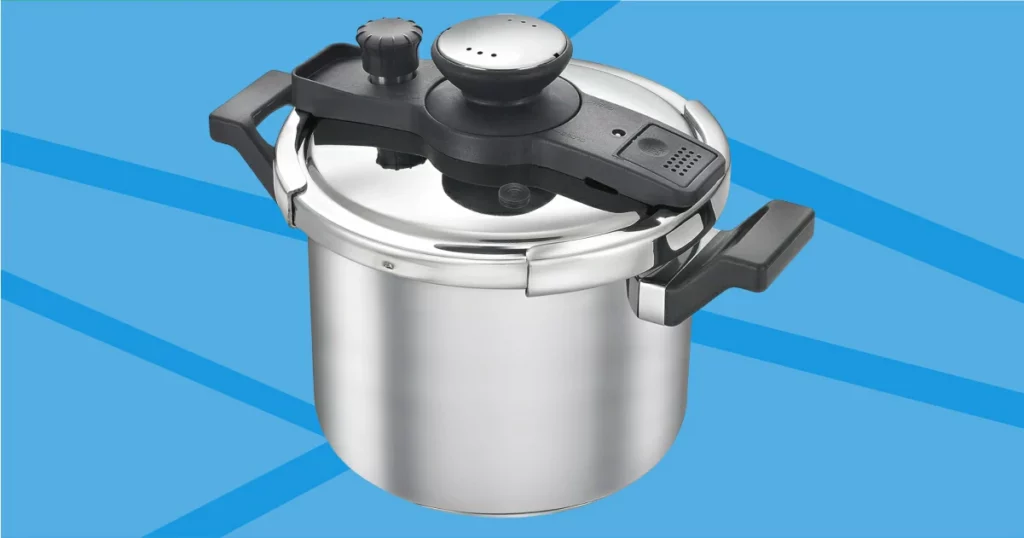
In the fast-paced realm of modern kitchens, clip-on pressure cookers have emerged as indispensable allies for culinary enthusiasts. These innovative appliances combine efficiency and convenience, transforming the cooking experience for both seasoned chefs and kitchen novices alike.
Features and Benefits
Compact Design
One of the defining features of clip-on pressure cookers is their compact and user-friendly design. Unlike traditional pressure cookers, the clip-on variety often boasts a streamlined structure that enhances storage convenience.
Ease of Assembly
Highlighting their user-centric design, clip-on pressure cookers typically come with straightforward assembly processes. This feature not only simplifies usage but also caters to individuals who may be new to the world of pressure cooking.
Versatile Cooking Options
From rapid cooking to slow simmering, clip-on pressure cookers offer a versatile range of cooking options. Users can confidently experiment with various recipes, unlocking the potential for diverse culinary creations.
Time and Energy Efficiency
The efficiency of clip-on pressure cookers in reducing cooking times and conserving energy is a standout benefit. With their sealed construction and innovative pressure mechanisms, these cookers accelerate cooking processes without compromising on flavor.
Unique Characteristics
Secure Clip-On Lid
Unlike traditional pressure cookers with intricate locking mechanisms, clip-on pressure cookers often feature a secure and easy-to-use clip-on lid. This design not only enhances safety but also ensures a hassle-free cooking experience.
Adaptable Pressure Settings
Another distinguishing characteristic is the presence of adaptable pressure settings. Users can tailor the cooking environment to suit specific recipes, providing a level of control that contributes to culinary precision.
Enhanced Safety Measures
Many clip-on pressure cookers incorporate advanced safety features, such as pressure indicators and secure locking mechanisms, ensuring a risk-free cooking environment.
As we navigate through this guide, we will delve deeper into these features and benefits, equipping you with the knowledge to maximize the potential of your clip-on pressure cooker and elevate your culinary endeavors.
Safety Precautions for Clip-On Pressure Cooker
The exhilarating journey into the world of clip-on pressure cooking comes with the responsibility of ensuring a secure and risk-free culinary experience. Prioritizing safety is paramount to unleash the full potential of your clip-on pressure cooker without compromising on well-being. Let’s delve into detailed safety precautions and guidelines to navigate this culinary adventure with confidence.
Familiarize Yourself with the User Manual of Clip-On Pressure Cooker
Begin by thoroughly reading and understanding the manufacturer’s user manual that accompanies your clip-on pressure cooker. This foundational step provides crucial insights into specific safety features and operational guidelines.
Inspect Seals and Valves Regularly
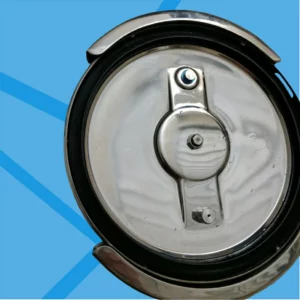
Periodically check the seals and valves of your pressure cooker for any signs of wear or damage. A well-maintained sealing system is essential for the cooker to function optimally and safely.
Properly Secure the Clip-On Lid
Before initiating any cooking process, ensure that the clip-on lid is securely fastened. A properly sealed lid is instrumental in maintaining pressure levels and preventing any potential accidents during cooking.
Mindful Pressure Release
Exercise caution when releasing pressure after cooking. Follow the manufacturer’s recommendations for safe pressure release methods, whether it involves natural release or manual release. This step mitigates the risk of steam-related injuries.
Avoid Overfilling
Adhere to recommended filling limits to prevent overpressure situations. Overfilling the cooker can compromise its safety features and lead to unpredictable outcomes.
Use Adequate Liquid
Guarantee the presence of sufficient liquid when cooking with a clip-on pressure cooker. Inadequate liquid levels can result in excessive pressure buildup and compromise the cooker’s safety.
Mindful Placement on Stovetops
If your clip-on pressure cooker is suitable for stovetop use, ensure it is appropriately sized for the burner. Incorrect placement can lead to uneven heating and safety hazards.
Educate Household Members
If multiple individuals use the pressure cooker, ensure that everyone is well-informed about its proper usage and safety precautions. A collective understanding reduces the likelihood of accidents.
Handle with Care
Exercise caution when handling hot components. Use heat-resistant mitts or utensils to prevent burns, and avoid direct contact with hot surfaces.
Immediate Inspection of Damaged Parts
If any part of the clip-on pressure cooker appears damaged or compromised, refrain from using it until the issue is rectified. Prompt maintenance ensures the longevity and safety of the appliance.
By integrating these safety measures into your clip-on pressure cooking routine, you’ll embark on a culinary adventure that is not only delicious but also secure. Stay vigilant, follow these guidelines diligently, and savor the joy of cooking with confidence.
Assembling Your Clip-On Pressure Cooker with Precision
Components of a Clip-On Pressure Cooker
Before embarking on your culinary journey, it’s crucial to familiarize yourself with the components that make up your clip-on pressure cooker. Understanding each part ensures a seamless assembly process. Here are the key components:
Base Unit
The foundational part that houses the heating element and provides stability.
Clip-On Lid
A secure lid with a convenient clip mechanism designed to fasten tightly to the cooker.
Sealing Ring
A rubber or silicone ring that forms a pressure-tight seal between the lid and the pot.
Pressure Indicator
A visual indicator that shows when the pressure inside the cooker has reached the desired level.
Pressure Valve
A valve that regulates the internal pressure and releases excess steam to maintain safety.
Handle(s)
Sturdy handles for safe and convenient transportation of the pressure cooker.
Inner Pot
The removable cooking container where ingredients are placed for cooking.
Assembly Instructions
Now, let’s break down the step-by-step process to assemble your clip-on pressure cooker correctly:
Inspect Components
Before assembly, check all components for cleanliness and ensure there are no damages or missing parts.
Place the Sealing Ring
Ensure the sealing ring is properly placed in the designated groove around the inside edge of the lid. Make sure it sits securely and is free from any folds or twists.
Attach the Clip-On Lid
Align the lid with the cooker’s opening and gently press down. Engage the clip mechanism by securing it firmly around the rim of the cooker.
Position the Inner Pot
Place the inner pot into the cooker, ensuring it sits evenly and securely on the base.
Adjust Handles
If your pressure cooker has multiple handles, adjust them to a position that provides a comfortable grip for lifting and handling.
Check Pressure Valve
Ensure that the pressure valve is clean and moves freely. It should be properly seated in its designated position on the lid.
Inspect Pressure Indicator
Check that the pressure indicator is functioning correctly and is visible through the designated window on the lid.
Securely Close the Lid
Close the lid securely by pressing down evenly on both sides. Confirm that the clip mechanism engages with a satisfying click.
Perform a Trial Seal Check
Before cooking, perform a trial seal check by pressing down on the center of the lid. It should resist being pushed down, indicating a proper seal.
Verify Handles are Secure
Double-check that all handles are securely fastened, ensuring a stable and safe grip during use.
By following these step-by-step instructions, you’ll assemble your clip-on pressure cooker with precision, setting the foundation for a successful and secure cooking experience. Now, you’re ready to explore the culinary possibilities of your well-assembled pressure cooker.
Operating Instructions
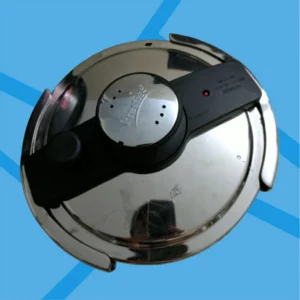
Securing the Lid
- Place the prepared ingredients in the inner pot.
- Align the clip-on lid with the cooker’s opening.
- Press down evenly on both sides until you hear a satisfying click, indicating that the lid is securely fastened.
Adjusting Pressure Settings
- Before turning on the heat, ensure the pressure valve is in the sealed position.
- Depending on your recipe and the desired pressure level, set the pressure regulator or adjust the settings on your cooker. Refer to your user manual for specific instructions.
Setting the Cooking Time
- Set the cooking time according to your recipe using the controls on your pressure cooker.
- If your pressure cooker has multiple pressure levels, select the appropriate setting for your dish.
Turning on the Heat
- Place the pressure cooker on the heat source, whether it’s a stovetop or an electric base.
- Ensure the heat setting is appropriate for your recipe, and the cooker starts building pressure.
Monitoring the Pressure Indicator
- Keep an eye on the pressure indicator. Once it reaches the desired pressure level, the cooking process begins.
- Some cookers have visual indicators or audible signals to alert you when the target pressure is reached.
Maintaining a Steady Pressure
Adjust the heat as needed to maintain a steady pressure throughout the cooking time. Follow the recipe guidelines for any adjustments required during the process.
Completing the Cooking Cycle
- Once the cooking time is complete, turn off the heat source.
- Follow the recommended pressure release method for your recipe. Some dishes benefit from natural release, while others may require a quick release to prevent overcooking.
Troubleshooting Tips
Pressure Loss During Cooking
Check the lid seal for any visible issues and ensure it’s correctly positioned. A compromised seal can lead to pressure loss.
Difficulty Securing the Lid
Ensure the lid is aligned correctly and that the clip mechanism is engaged. If you’re having trouble, inspect the lid and cooker edges for any obstructions.
Excessive Steam Release
Verify that the pressure valve is correctly positioned and not clogged. Clean the valve if necessary.
Double-check that the sealing ring is properly seated to prevent steam leaks.
Uneven Cooking
Confirm that ingredients are uniformly cut for even cooking.
Stir ingredients before sealing the lid to distribute heat evenly.
Burnt Residue on the Bottom
Adjust the heat settings to prevent scorching, especially when cooking recipes with thicker sauces.
Deglaze the bottom if necessary to prevent a burn notice.
Cooker Not Reaching Pressure
Check the sealing ring, pressure valve, and lid for any issues that might prevent the cooker from reaching pressure.
Ensure the cooker is not overfilled, and there’s enough liquid for steam generation.
By following these operating instructions and troubleshooting tips, you’ll confidently navigate the clip-on pressure cooking process, creating delicious and perfectly cooked meals with ease.
Cleaning After Use to Clip-On Pressure Cooker
Allow Cooling Time
Before cleaning, allow the clip-on pressure cooker to cool down. This ensures safe handling and prevents burns.
Disassemble Components
Remove the inner pot, sealing ring, pressure valve, and any other detachable parts to thoroughly clean Clip-On Pressure Cooker.
Hand Wash Components
Wash the removable components, including the inner pot and sealing ring, with warm, soapy water. Use a non-abrasive sponge or cloth to avoid damaging surfaces.
Clean the Lid
Wipe down the clip-on lid with a damp cloth. Pay special attention to the sealing ring area to remove any food particles.
Inspect and Clean the Pressure Valve
Inspect the pressure valve for any residue or blockages. Clean it using a soft brush or by soaking it in warm, soapy water. Ensure it moves freely after cleaning.
Clean the Base Unit
Wipe the exterior of the base unit with a damp cloth. Avoid immersing the entire cooker in water, especially if it has an electric base.
Check for Residue:
Inspect the bottom of the cooker for any burnt or stuck-on residue. If needed, use a non-abrasive scouring pad or a mixture of baking soda and water to gently scrub away residue.
Dry Thoroughly:
Ensure all components are completely dry before reassembling the clip-on pressure cooker. Moisture can lead to unpleasant odors or even damage the cooker over time.
Maintaining Longevity
Regularly Inspect Seals and Valves
Periodically check the sealing ring and pressure valve for wear and tear. Replace them if you notice any damage to maintain a proper seal.
Avoid Abrasive Cleaners
Refrain from using abrasive cleaners or scouring pads on the cooker’s surfaces, as they can cause scratches and damage the finish.
Store with Care
Store the clip-on pressure cooker with the lid upside down to allow proper ventilation and prevent any lingering odors.
Keep the Lid Seal Clean
Regularly clean the lid seal to prevent food particles from accumulating. This ensures a tight seal during cooking.
Inspect Handles and Latches
Check handles and clip mechanisms for any signs of wear or loosening. Tighten screws if necessary to maintain the cooker’s structural integrity.
Follow the Manufacturer’s Recommendations
Adhere to the manufacturer’s guidelines for maintenance and care. This includes any specific recommendations for your clip-on pressure cooker model.
Store in a Cool, Dry Place
When not in use, store the clip-on pressure cooker in a cool, dry place away from direct sunlight. This prevents potential damage and prolongs its lifespan.
By following these cleaning and maintenance guidelines, you’ll not only keep your clip-on pressure cooker in top condition but also ensure its longevity, allowing you to enjoy many delicious meals for years to come.
FAQs
How does a clip-on pressure cooker work, and what makes it different from other types of pressure cookers?
A clip-on pressure cooker operates similarly to traditional pressure cookers but features a convenient clip-on lid mechanism. This design ensures a secure seal, simplifying the assembly process and making it user-friendly. The clip-on feature distinguishes it from other pressure cookers, offering efficiency and ease of use.
Can I use my clip-on pressure cooker on a regular stovetop?
Yes, many clip-on pressure cookers are designed for use on regular stovetops. However, it’s essential to check the manufacturer’s instructions for your specific model. Some may also be compatible with induction cooktops.
Are clip-on pressure cookers safe to use?
A: Absolutely. Clip-on pressure cookers are designed with safety features, including secure lid mechanisms, pressure indicators, and reliable pressure release valves. Following proper usage guidelines and safety precautions outlined in the user manual ensures a safe cooking experience.
How do I know when it’s safe to open the clip-on pressure cooker after cooking?
Once the cooking time is complete, wait for the pressure to release naturally for a few minutes if specified in your recipe. For a quicker release, follow the manufacturer’s instructions for manual pressure release. Ensure the pressure indicator has dropped before opening the lid.
Can I adjust cooking times and temperatures in a clip-on pressure cooker?
Yes, adjusting cooking times and temperatures is possible with a clip-on pressure cooker. Different recipes and ingredients may require variations in cooking parameters. Refer to your user manual for guidance on adjusting settings to achieve the desired results.
How do I clean and maintain my clip-on pressure cooker for longevity?
After each use, disassemble removable parts for cleaning, such as the inner pot, sealing ring, and pressure valve. Wipe down the exterior with a damp cloth. Regularly inspect seals and valves for wear. Avoid abrasive cleaners and follow the manufacturer’s maintenance recommendations.
Can I cook rice and grains in a clip-on pressure cooker?
Absolutely. Clip-on pressure cookers excel at cooking rice and grains quickly and evenly. Follow recommended water-to-grain ratios, set the appropriate cooking time, and enjoy perfectly cooked rice and grains with minimal effort.
Is it possible to cook frozen ingredients in a clip-on pressure cooker?
Yes, clip-on pressure cookers are suitable for cooking frozen ingredients. Adjust the cooking time accordingly, as frozen items may require a slightly longer duration to reach the desired level of tenderness.
Can I use the clip-on pressure cooker for canning?
Most clip-on pressure cookers are not recommended for canning due to specific requirements for safe canning processes. For canning, it’s advisable to use a pressure canner designed explicitly for this purpose.
What are some tips for achieving the best results with a clip-on pressure cooker?
Experiment with different recipes, layer ingredients strategically for even cooking, and take advantage of the sealed environment to intensify flavors. Follow recommended guidelines for assembly, safety, and maintenance to ensure optimal performance.
Key Points
- Effortless Assembly: The clip-on lid mechanism simplifies the assembly process, making it user-friendly and accessible for both seasoned chefs and kitchen novices.
- Versatility in Cooking: From hearty stews to quick one-pot meals, clip-on pressure cookers accommodate a diverse range of recipes, providing flexibility and convenience.
- Time and Energy Efficiency: The sealed environment of clip-on pressure cookers accelerates cooking times, conserves energy, and retains the vibrant colors and nutrients of ingredients.
- Safety First: Equipped with secure lid mechanisms, pressure indicators, and reliable pressure release valves, clip-on pressure cookers prioritize safety, ensuring a worry-free cooking experience.
- Precision in Cooking: Adjustable pressure settings allow for precise control over cooking conditions, enabling you to tailor the cooking environment to suit different recipes.
- Easy Maintenance: Simple disassembly and cleaning procedures, along with regular maintenance, contribute to the longevity and optimal performance of your clip-on pressure cooker.
Benefits
- Time-Saving Convenience: Clip-on pressure cookers transform time-consuming recipes into quick and efficient culinary delights.
- Flavorful Creations: The sealed environment intensifies flavors, turning ordinary meals into extraordinary culinary experiences.
- Adaptability to Various Recipes: From tender meats to perfectly cooked grains, the clip-on pressure cooker adapts to a myriad of ingredients, allowing for diverse and delicious creations.
- Effortless Cleanup: User-friendly design and easy disassembly make cleaning a breeze, promoting a hassle-free post-cooking routine.
Our Final Thoughts
A clip-on pressure cooker is not just a kitchen appliance; it’s a gateway to a world of culinary possibilities. Whether you’re a busy professional, a home chef with a passion for experimentation, or someone looking to simplify their cooking routine, the clip-on pressure cooker stands ready to elevate your culinary experience. Embrace the convenience, savor the flavors, and enjoy the journey of creating delightful meals with this innovative kitchen companion.
